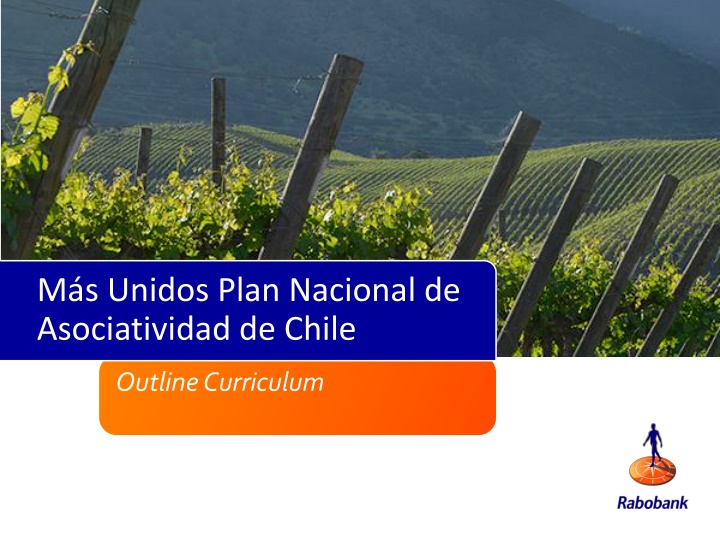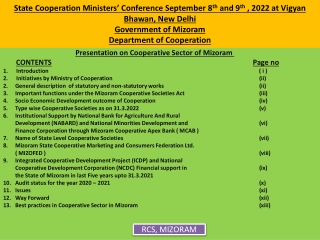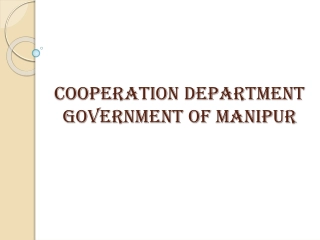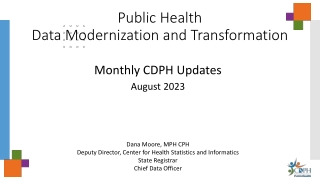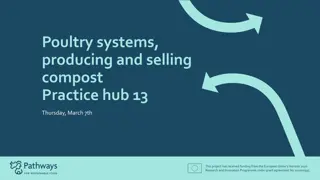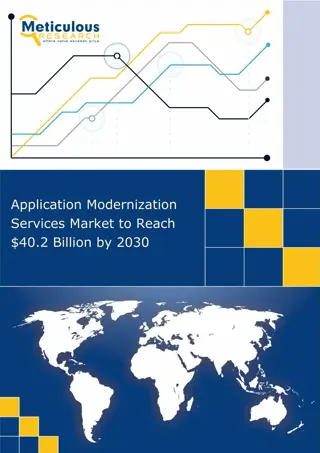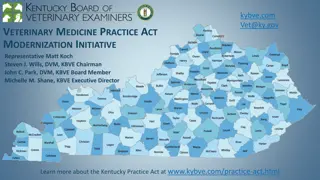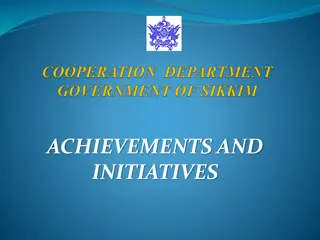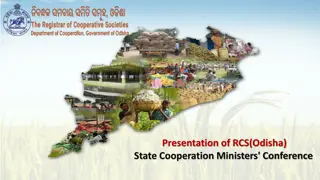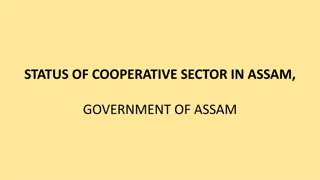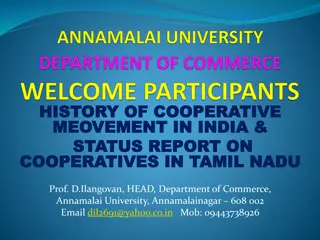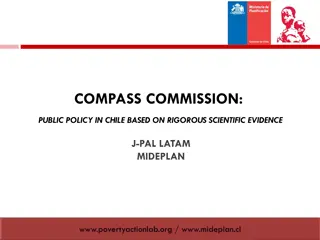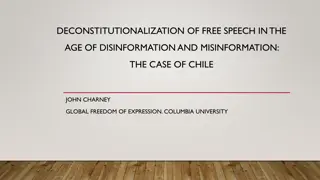Chile Cooperative Curriculum: Evolution & Modernization
Dive into the evolution and economic significance of cooperatives with a focus on Chile's agricultural sector. Explore topics like cooperative models, historical roots, and modern transformations to understand their impact on rural development and inclusiveness.
Download Presentation

Please find below an Image/Link to download the presentation.
The content on the website is provided AS IS for your information and personal use only. It may not be sold, licensed, or shared on other websites without obtaining consent from the author.If you encounter any issues during the download, it is possible that the publisher has removed the file from their server.
You are allowed to download the files provided on this website for personal or commercial use, subject to the condition that they are used lawfully. All files are the property of their respective owners.
The content on the website is provided AS IS for your information and personal use only. It may not be sold, licensed, or shared on other websites without obtaining consent from the author.
E N D
Presentation Transcript
Ms Unidos Plan Nacional de Asociatividad de Chile Outline Curriculum
Table of contents General Approach 1. The evolution of cooperatives 2. A Cooperative in a Food System 3. A Modern Agricultural Cooperative 4. Capitalization & Finance 5.
1 General Approach
General Approach Each module will have the same structure: Why? What? How? Where? Why?: is explaining the objective and the target group of this module What?: the core content of the module. For instance in the module regarding a cooperative in a food system , the concept of a food system will be explained (theory) How?: is explaining how items can be made applicable in the Chilean context. This chapter consists of key questions, tools and examples related to the content presented. The presentation will be short and simple (using bullets) to make it better accessible (practice); how cooperatives can transform to modern cooperatives? Where?: is sharing additional content if people are more interested to read details on a specific topic and links/ documents for further reading.
Modules Overview Outline Curriculum The cooperative curriculum will consists of the following four modules: The evolution of cooperatives A Cooperatives in a Food System A Modern Agricultural Cooperative Capitalization & Finance The modules will be enriched with examples based on the following template: Topic Introduction Case description Effects Applicability to Chile
2 The Evolution of Cooperatives
The Evolution of Cooperatives The evolution of Cooperatives The economic importance of Cooperatives What is the value of the cooperative business model? Historical Roots of Cooperatives Consumer Cooperatives Credit Cooperatives Dairy Cooperatives in the Netherlands Cooperatives in a changing world Cooperatives for rural development Cooperatives and inclusiveness
3 A Cooperative in a Food System
A Cooperative in a Food System See our current report: a cooperative in a food system ; what? Transitions & Food System = core module Transitions: Food System: Scale & Scope Marketing & Innovation Sustainability & Digitalization Sustainability Enablers Economic Enablers Digital Enablers
A Cooperative in a Food System See our current report: a cooperative in a food system ; how? Sectoral & Regional Analysis (assessment methodology food system thinking) Global demand & supply features The sector in Chile The value chain analysis The regional dynamics Main characteristics Main takeaways
A Modern Agricultural Cooperative 4
A Modern Agricultural Cooperative Cooperative Governance & Leadership; what? Cooperative Strategy Segmentation, Channels, Value Proposition Price Mechanism Supply & Demand Position in the value chain/ food system Growth Strategy Marketing & Innovation Strategies for Cooperatives Collaborative Strategies Governance Structures in Modern Cooperatives Basic Governance Structures Leadership & Management Multi-Purpose Cooperatives Innovation in Internal Governance
Cooperative Governance & Leadership Cooperative Governance & Leadership; what? Member-Cooperative Relationship Services to members The need for collective action the reasons for joining a cooperative Transaction, Ownership, Control & Community Member-Base: youth, aging farmers, lack of trust Cooperative Principles ICA Principles Business Principle: Self-Financing Delivery Obligations Serve at Cost Proportionality
Cooperative Governance & Leadership Cooperative Governance & Leadership; how? Business Plan Business Plan Modern Cooperatives Structure Business Plan Specific items related to the cooperative structure (all items are addressed in the aforementioned curriculum)
5 Capitalization & Finance
Capitalization & Finance Capitalization & Finance; what? Risk-Bearing Capital Risk-Bearing Capital a prerequisite to become bankable and sustainable Principles of Self-Financing Capitalization & Zero-Loss Policy Advanced Capitalization Opportunities related to members Advanced Capitalization Opportunities not related to memebers Finance Structures Basic finance Structures Blended Finance Structures Credit Assessment General Credit Assessment How to assess an agricultural cooperative The different key assessment features of a cooperative
